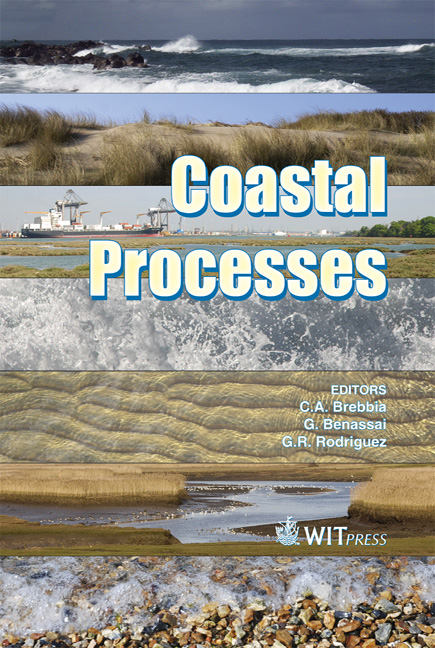Use Of Video Imagery To Test Model Predictions Of Surf Heights
Price
Free (open access)
Transaction
Volume
126
Pages
12
Page Range
39 - 50
Published
2009
Size
472 kb
Paper DOI
10.2495/CP090041
Copyright
WIT Press
Author(s)
D. Huntley, A. Saulter, K. Kingston & R. Holman
Abstract
This paper describes a new method of estimating breaking wave heights from video images of the surf zone, and uses the method to test real-time numerical model predictions based on global and regional winds. The test site is an exposed beach on the southwest coast of the United Kingdom (Perranporth, Cornwall). Breaking wave height estimates based on the video technique are found to be accurate to at least ±30%. The model predictions show a linear correlation with video-derived wave heights with a regression coefficient of 0.82 and slope of 0.93 However individual comparisons can differ by up to a factor of 2 for wave heights around 1m, reducing to around 1.5 for a wave height of 3m. The primary causes of error are likely to be inadequate bathymetry near the coast and wind speed errors offshore. Keywords: breaking wave heights, coastal video imagery, wave modelling. 1 Introduction Wave breaking at the shoreline creates one of the most energetic natural environments and is responsible for the generation of strong currents and for moulding the constantly changing morphology of the coastal environment. The processes of wave breaking and its consequences are however complex and still far from being fully understood. Modelling and hindcasting breaking wave heights and associated currents and evolving nearshore morphologies over timescales of weeks and years appear to
Keywords
breaking wave heights, coastal video imagery, wave modelling





